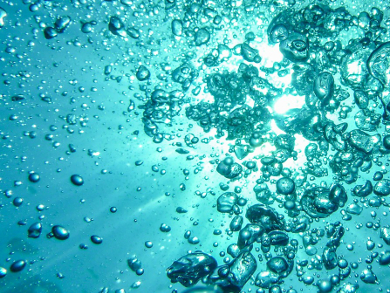Low-cost small-scale water desalination could be very useful to ensure the supply of drinking water in developing and remote areas. Ion concentration polarization (ICP) is a desalination technique that requires little energy, which could make it suitable for such applications. The method works by applying a voltage to an ion-selective membrane, which causes a depletion of ions around the membrane. This zone repels charged species. However, the technique is usually performed using expensive microfluidic devices.
Hong Liu and colleagues, Southeast University, Nanjing, China, have developed a low-cost, fabric-based desalination setup that uses ICP. The team used polyester fabric, cut to form a Y shape. Near the bifurcation, a Nafion membrane was placed on the fabric and the device was laminated in plastic to ensure good contact between membrane and fabric. One end of the fabric was placed in a water reservoir, and a voltage was applied to the Nafion membrane to induce the ICP effect. Brine and desalinated water could then be separately collected from the two other ends of the Y-shaped fabric. Due to capillary flow in the fabric, no pump is needed.
The device’s salt rejection rate depends on the applied voltage. Above 15 V, it produces drinkable water. The team calculated the cost of desalination and, depending on the salt concentration and applied voltage, the cost for 1000 L is between 12 and 43 USD. The fabric also filters the water due to its porous structure, which causes a purification effect during the process.
- Fabric-Based Ion Concentration Polarization for Pump-Free Water Desalination,
Biao Ma, Junjie Chi, Hong Liu,
ACS Sustainable Chem. Eng. 2017.
https://doi.org/10.1021/acssuschemeng.7b03679
Also of Interest
- TUM DeSal Challenge 2016 – The Winners,
Catharina Goedecke,
ChemistryViews.org 2016.
Best desalination plants honored in finals of student competition




